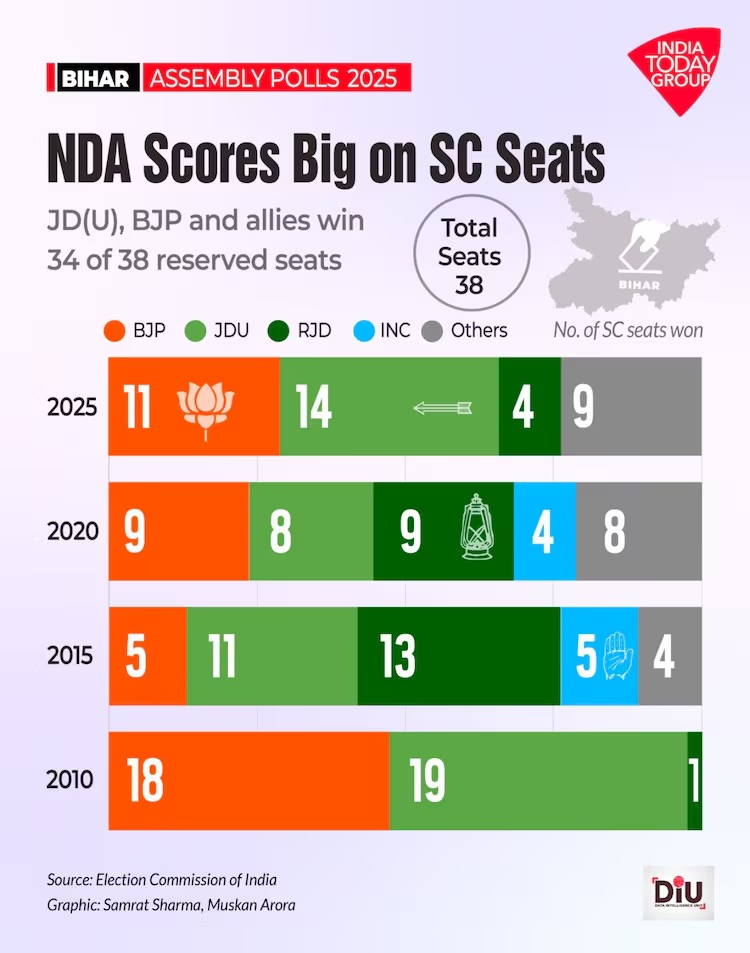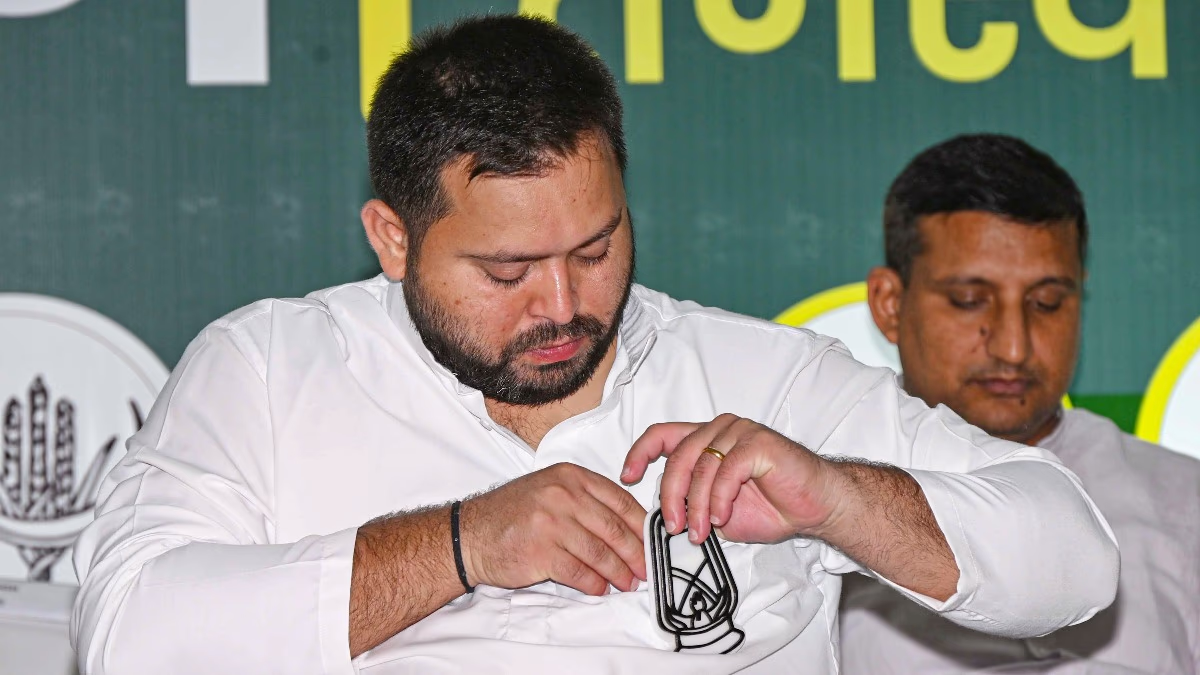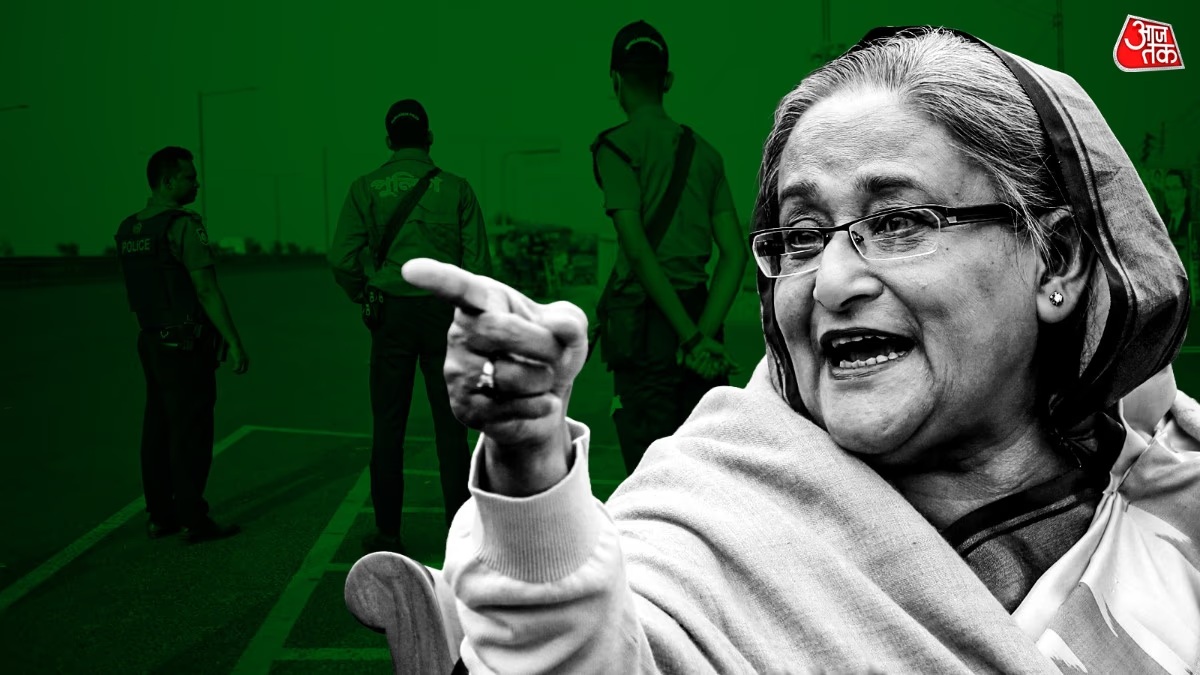An election's outcome is not just about party wins or losses, but also about the narrative of the oppressed versus the oppressors. Before diving into Bihar's scenario, it's crucial to recall Haryana's election story. Under Bhupinder Singh Hooda, Congress was so assured of victory, saying, 'The Jats are coming.' While Congress dreamt of success, Dalits and Yadavs in Haryana were cautious, haunted by past incidents like Mirchpur, Gohana, and Bhagana atrocities against them. Consequently, backward castes voted for BJP, despite an earlier preference for Congress due to their past oppression memories. A similar scene unfolded in Bihar. Confident of RJD's victory, artists posted tunes and reels online, with themes of 'Yadav's dominance...' impacting Dalits and women more than the savarna.
Understanding the redefine of the oppressor and oppressed in Bihar requires a look at history. Before Lalu Yadav, Bihar's leadership rested with the savarna, especially Brahmins. State resources were dominated by landowners and Thakurs. Lalu's rise changed everything. Rooted in the Yadav-Muslim voter base, he harnessed Naxalites, seized control of Bihar's system through muscle and political prowess, becoming the new boss of the political and social order. Between 1990 and 2005, savarnas resisted 'Yadav dominance' in their ways, but the oppression stories of Dalits and backwards lingered in obscurity. Recently, an incident near Nawada, which left around 100 Dalit homes burned, renewed memories of this Yadav-Dalit conflict, with 12 Yadav accused in the incident.
Rather than addressing the culprits, Tejaswi attacked the Nitish government. Such political strategizing sent a message among Dalits that Tejaswi might overlook 'Yadav dominance', raising fears of what could be if he came into power.
Post Lalu Yadav's imprisonment and health issues, Tejaswi had the chance to expand the M-Y vote bank inherited from his father, shedding the 'jungle raj' tag. Yet, he focused on Yadavs and Muslims. Among RJD's 143 candidates, 51 were Yadav, 19 Muslim. Attempting dialogue with the Extremely Backward Classes (EBC), he allied with Mukesh Sahni, even naming him Deputy CM candidate. However, several Muslim leaders projected this as sidelining the state's 17% Muslim populace, leading Owaisi to address this in several public gatherings in Seemanchal.
Nevertheless, outside Seemanchal, Muslims majorly supported RJD. The major dent for Tejaswi came from the Dalit and extremely backward communities, noticeable when Mukesh Sahni's party failed to secure even one seat despite his Deputy CM candidacy. Notably, RJD won merely 4 of the 38 reserved seats, while the BJP, pegged as a savarna party, garnered 11 seats, and JDU claimed 14. Remaining seats were picked up by NDA allies Chirag Paswan and Jitan Ram Manjhi.
The answer hides within Bihar's intricate social calculus in the 2025 electoral battle between perceived oppressor and oppressed. During campaigns under 'Yadav pride', songs hinting at violence and rule under Tejaswi haunted Dalits more than the savarna. Back in Lalu's time, it was Dalits and backwards who bore the brunt of asserted power more than the savarna. This time, savarna groups tactically opposed RJD. In contrast, Dalits and backward communities found few paths of evasive strategies, with Nitish forming an alliance of Dalits and non-Yadav OBCs, seizing RJD's foundational ground.

Source: aajtak
Despite the complex demographics from the 2023 caste survey—where OBC-EBC constitutes 63% and Dalits 19.65%, outweighing Yadav's 14.27% and Muslims 17.7%—Tejaswi stuck with M-Y strategy, ignoring the wider populace.
Though unofficial songs like 'Let Tejaswi come to power, we will shoot' likely had no RJD endorsement, Tejaswi’s visible reluctance to bond with Dalit or upper castes weakened his political stance. Banking on caste polarization, and expecting automatic Dalit and backward alliances with RJD, Tejaswi relied heavily on Rahul Gandhi's campaign posing the sarnava as targets while emphasizing backward voices, inadvertently undermining Bihar’s and notably Yadav forces in army representation. This approach starkly contrasts with any potential wins via savarna outreach, evident from successful strategies like Mayawati's socially engineered 'Brahmin-Dalit brotherhood' in UP.
Mayawati's strategy rooted in Dalit base expanded into non-Yadav OBCs and Brahmins under Satish Misra's leadership, creating a robust alliance. This unity of Dalits, non-Yadav OBCs, and Brahmins led BSP's historical 2007 win, marking a notable social engineering endeavor. Tejaswi, similarly, could have forged a novel identity amongst sarnava groups affected during Lalu's era but missed the opportunity.
The 2025 Bihar elections pronounced that political success hinges on representing diverse societal groups, beyond singular community allegiance, akin to Mayawati's tested strategy.




